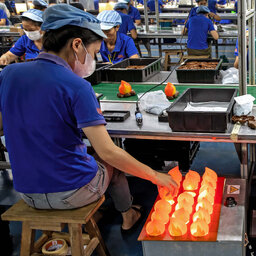Mining Asteroids For Science – and Lucrative Metals
If you’re a comic book or sci-fi fan, you’ve likely read about the far-off idea of hitching a ride on an asteroid and mining it for precious metals and ice. But it’s not science fiction anymore. In this episode, we’ll take a look at two real-life asteroid-mining missions in the works.
Dr. Dante Lauretta, who leads NASA's OSIRIS-REx asteroid sample return mission, talks about what they’ve gathered from the Bennu near Earth asteroid, which will arrive back home later this year.
We also speak with Matt Gailich, co-founder and CEO of AstroForge–a company sending up two missions this year with the ultimate goal of mining asteroids for platinum and other valuable metals needed for electric cars and other technology.
Bloomberg’s space reporter Loren Grush then joins to give a bigger-picture view of other breakthroughs on the horizon in the fast-growing race to space.
Learn more: https://bloom.bg/3YaZK32
Listen to The Big Take podcast every weekday and subscribe to our daily newsletter: https://bloom.bg/3F3EJAK
Have questions or comments for Wes and the team? Reach us at bigtake@bloomberg.net.
 Big Take
Big Take


